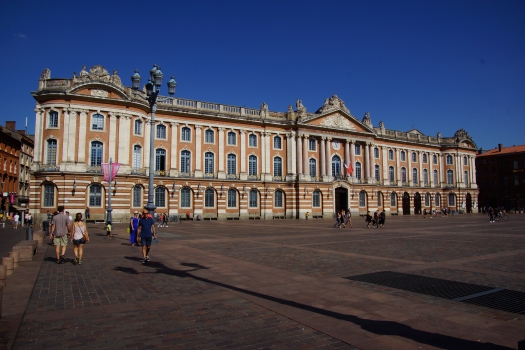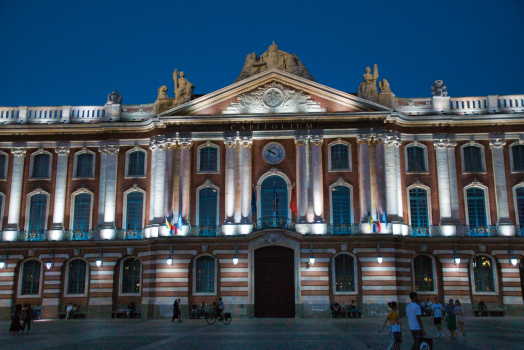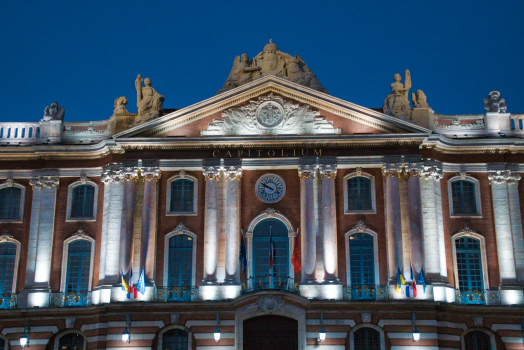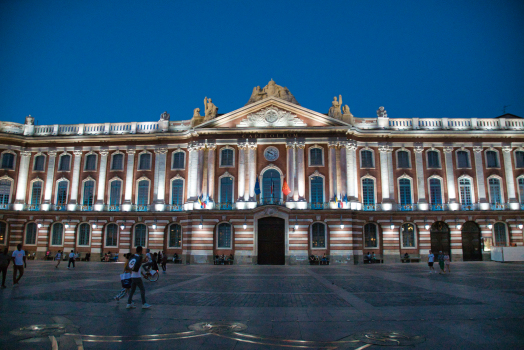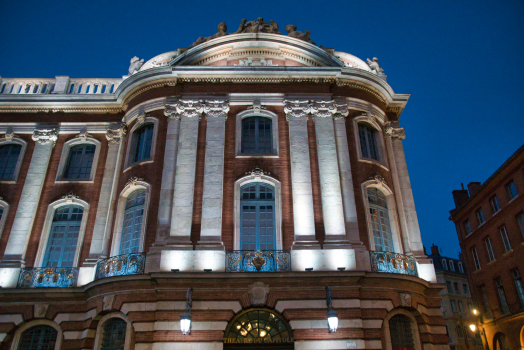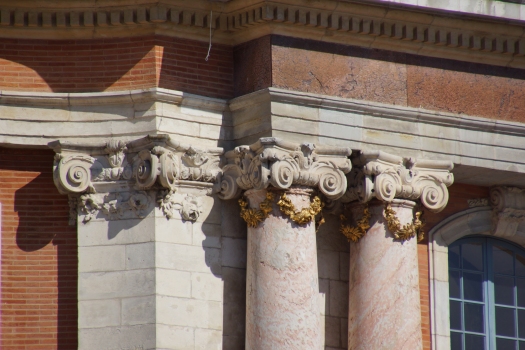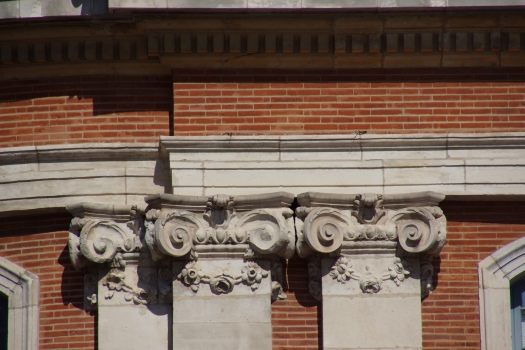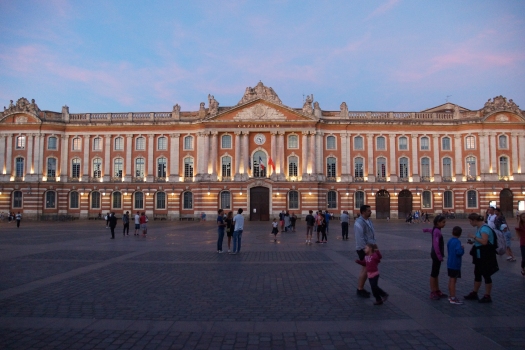General Information
| Other name(s): | Hôtel de ville |
|---|---|
| Status: | in use |
Project Type
| Function / usage: |
City or town hall |
|---|
Location
| Location: |
Toulouse, Haute-Garonne (31), Occitanie, France |
|---|---|
| Part of: | |
| Coordinates: | 43° 36' 16.27" N 1° 26' 39.35" E |
Technical Information
There currently is no technical data available.
Excerpt from Wikipedia
The Capitole (French for "capitol") is the heart of the municipal administration of the French city of Toulouse and its city hall.
It is supposedly on the spot that St Saturninus was martyred. The bishop of Toulouse is said to have been tied to the legs of a bull, which was driven down the steps of the town's capitol, causing his head to be dashed open.
The Capitouls (governing magistrates) of Toulouse embarked on the construction of the original building in 1190 to provide a seat for the government of a province growing in wealth and influence. The name "Capitole" referred not only to the Roman Capitol but also to the capitulum, which was the chapter of the governing magistrates. It was a centre of contention during the 1562 Toulouse Riots, with Huguenot forces holding it with captured cannon.
In the 20th century, the structures surrounding the vast (2 ha) Place du Capitole were redesigned, but the current façade, 135 m long and built of the characteristic pink brick in Neoclassical style, dates from 1750, built according to plans by Guillaume Cammas. The eight columns represent the original eight capitouls. In 1873, Eugène Viollet-le-Duc built a bell tower typical of the style of northern France on top of the donjon of the building. It was in this donjon that Jean Calas, a Protestant victim of a religiously-biased trial, was interrogated. Only the Henri IV courtyard and gate survive from the original medieval buildings. It was in this courtyard that the Duke de Montmorency was decapitated after his rebellion against Cardinal Richelieu. A thorough redesign of the Place du Capitole in 1995 reserved the space for pedestrians. Some of the interior of the Capitole can be traced back to the 16th century. Today the Capitole houses the city hall, as well as the Théâtre du Capitole de Toulouse opera company and the Orchestre national du Capitole de Toulouse. The Salle des Illustres contains 19th century works of art.
Text imported from Wikipedia article "Capitole de Toulouse" and modified on July 23, 2019 according to the CC-BY-SA 4.0 International license.
Participants
- Nicolas Bachelier (architect) (interior court)
Relevant Web Sites
Relevant Publications
- (2000): Hôtels de ville de France. Imprimerie nationale éditions. Dexia éditions, Paris (France), pp. 112-118.
- (2007): Toulouse secret et insolite. Les trésors cachés de la ville rose. 1st edition, Les Beaux Jours, Paris (France), ISBN 978-2-35179-015-1, pp. 12-16.
- About this
data sheet - Structure-ID
20013599 - Published on:
01/10/2004 - Last updated on:
10/08/2023

